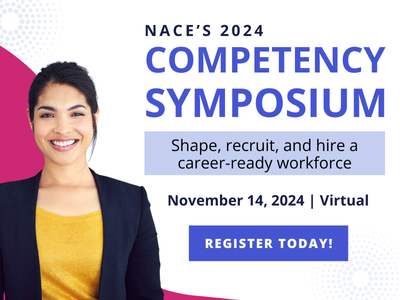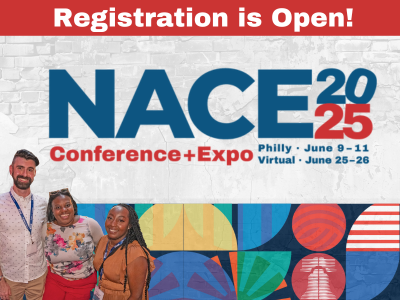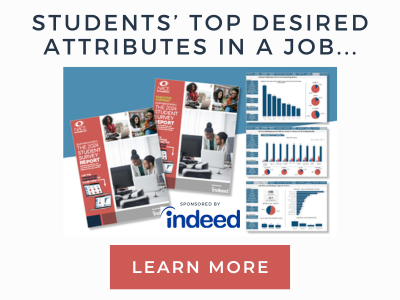Spotlight for Recruiting Professionals
Companies that currently do not have jobs or internships due to the coronavirus pandemic should try to provide students with learning engagement support or development, and strive to make connections with them to better position themselves for future hiring.
“That, too, is where the humanity comes in to the process,” says Trudy Steinfeld, strategic adviser, Americas, at Cappfinity, who recently shared additional ideas for future-proofing a talent pipeline.
“We are at a very unique moment in time. If we are going to build a resilient workforce for the future, employers have to hire when they can. However, when employers cannot hire, they have to provide some mechanism for learning, development, feedback, and engagement.”
During the Great Recession, some organizations cut hiring, internships, recruiting, and student and campus support.
“Once jobs started coming back, they had to start from square one and then they could not catch up to meet their hiring needs,” Steinfeld explains.
Others failed to make prudent moves that could have positioned themselves for future success. For example, Steinfeld relays the case of a URR manager who told her employer that in keeping with the organization’s long-term plan, it needed to hire tech employees.
“At the time, financial firms that invested in technology were letting employees go and not hiring new college graduates,” she notes.
“Despite the [URR manager] recommending that the organization hire these tech graduates and employees, the employer did not want to spend money that way and it scrambled to find tech hires going forward. They missed a huge opportunity.”
Years later and with a different organization, the URR manager found herself in a similar situation.
“This CEO, however, recognized the critical need to keep investing in URR to bring in the organization’s future innovators and leaders,” Steinfeld notes.
“Now, even though there are realignments happening within the organization because of COVID-19, it is still sourcing talent. If organizations cut off hiring and engagement, not only in tech, but in other areas, so many of these essential skill areas are going to be in demand that the organization will not be able to get the staff it needs in a timely way because it will be similar to starting a new program. It may be hard to justify it now, but young talent not only costs less now, but it also serves as an investment in what the business’ focus will be in the future, even if the employer does not know what that will be at this moment.”
Steinfeld explains that, in many cases, employers are hiring for jobs now that could change six months or one year out.
“Therefore,” she continues, “employers need to cast a different lens on the kind of talent that they are looking at and need to expand that lens because their needs now and in the future will be different, even if they are not sure what that ‘different’ is. This shift is why competencies and strengths are so important.”
Steinfeld says that purpose is going to become very important for students. On one hand, she explains, they will need a job, but they will not stay with a company if its core values and mission are not clear and it is not transparent about its values and mission.
“If employees are not supported, they will no longer work for an organization that doesn’t have a certain value set or core principles that they feel good about and align with,” Steinfeld says.
“Therefore, another way for an employer to future proof its talent pipeline is to be very specific about how it is not only recruiting, but also about how it is supporting its employees and the inclusivity of its culture. Lip service will no longer be acceptable; organizations are going to have to demonstrate their values of inclusivity.
“This means that organizations are going to have to look at how talent is not only onboarded, but they are going to have to provide ongoing support mechanisms and training. When they go to campus—whether physically or virtually—employers are going to have to be very clear about this because students are going to ask them about this and they are going to look for proof. Organizations will not be able to retain and grow that talent if they don’t take this moment to look internally at their processes and culture.”
They should also find ways to make strong campus connections. For example, when she was in career services, Steinfeld’s career center worked with a company that had little brand recognition and was having difficulty attracting students.
“It had a great story about service, meaning it gave employees time each year to volunteer or ‘lent out’ employees for community service a designated number of hours each month,” Steinfeld says.
“They began involving students in these projects—such as cleaning up a park or tutoring—and got so much traction. Employers can reach students with a compelling message and demonstrate its values through service projects, for example. It is not only the money an organization gave to a foundation, but how it puts boots on the ground to make real change and impact that can attract candidates.”
In a time when applicant tracking systems and automated responses are common ways organizations streamline processes, Steinfeld points that students overwhelmingly indicate the need for human touch points.
“Companies that want to future proof are going to figure out how to scale bringing human touch points into their processes,” she says.
“There are ways to do mentorship at scale if organizations get more involved in a way that is supportive and constructive. During the financial crisis, even though they were not hiring, some financial firms sent recruiters to campus to support career centers by mentoring, mock interviewing, and reviewing resumes. These firms made connections with students and when they started hiring again, they had an advantage because of those connections.”
Many mentor programs do not work because organizations assign a student a mentor and then they meet infrequently.
“Students want and need a more frequent connection,” Steinfeld says.
“It doesn’t have to be every day or every week, but it does have to be more than once a semester or once a year. When building their pipelines, organizations need to build in this connectivity with students who can benefit from their expertise and honest advice, and then keep these relationships going. Even if it is a 15-minute touchpoint or check-in over coffee virtually every few weeks or months, students who you can engage and hire in the future are crying out for this human touch.”
Another beneficial strategy for organizations that do not have any or enough internships or that are not currently hiring is to involve students in short-term, contracted projects or work simulations. Doing so gets students involved in the work of the organization and allows the organization to evaluate the student.
“If students have a great experience, the organization can always reach back out to them when hiring changes,” Steinfeld says.
“Maybe the employer is not hiring today, but it might be in three months. The visionary ones are preparing for that increase in hiring now.”







